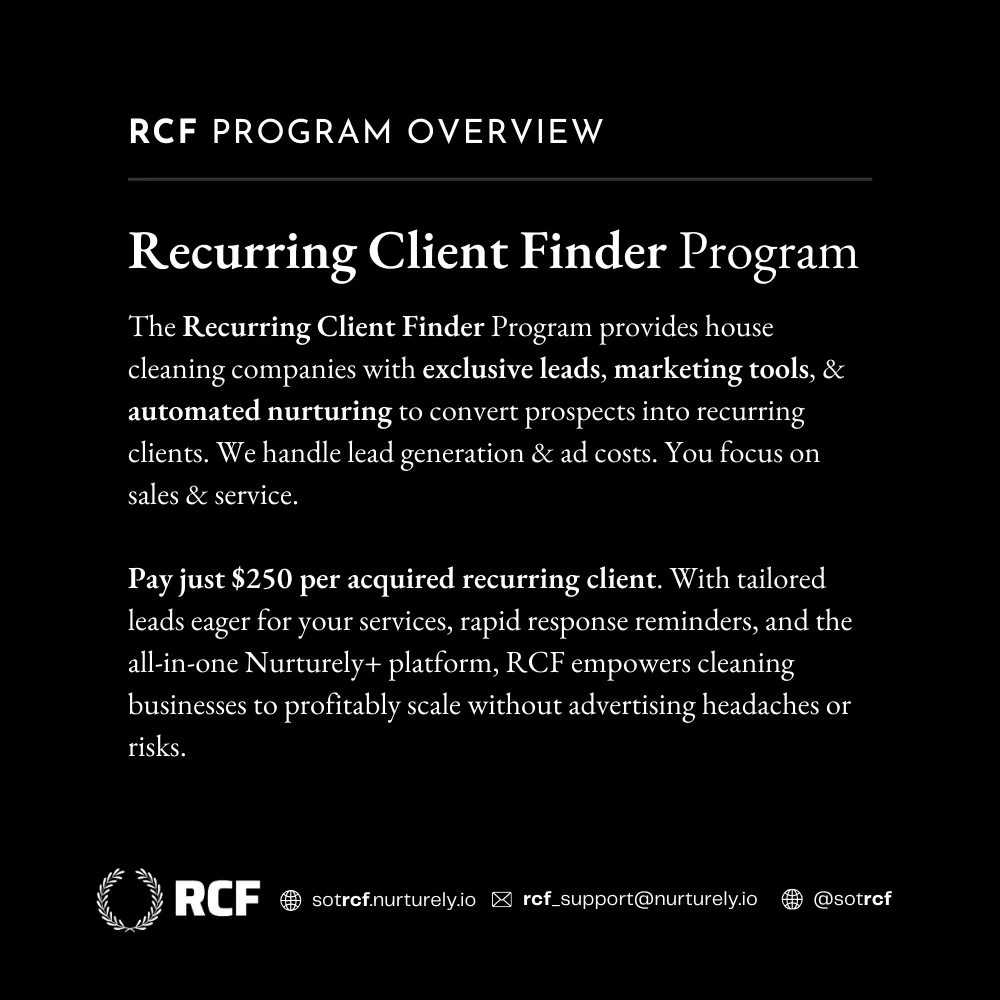
How to Calculate and Interpret LTV and CAC for Home Services & Cleaning Companies
Introduction
Financial metrics serve as crucial navigational tools, helping entrepreneurs steer their ventures towards success. Among these metrics, Lifetime Value (LTV) and Customer Acquisition Cost (CAC) stand out as foundational pillars for evaluating business health and strategic direction.
Why is the LTV to CAC Ratio Important?
Understanding the balance between the lifetime value of customers and the costs associated with acquiring them is essential.
The LTV to CAC ratio acts as a critical indicator of business sustainability and growth. By measuring how much value a business gains from a customer compared to the cost of acquiring them, leaders can make informed decisions that propel long-term profitability and efficiency.
Understanding LTV and CAC
What is Lifetime Value (LTV)? Lifetime Value (LTV) measures the total revenue a business can expect from a single customer throughout their relationship. This metric is crucial as it helps determine how much a company can afford to spend on acquiring each customer and still make a profit.
Calculating LTV: LTV is calculated using three key components:
Average Purchase Value: How much money does a customer spend on average per transaction?
Purchase Frequency: How often does a customer make a purchase within a given period?
Customer Lifespan: Over what period does a typical customer continue to buy from your business?
Understanding Customer Acquisition Cost (CAC)
Customer Acquisition Cost (CAC) quantifies the total expense of gaining a new customer. It's a fundamental metric that evaluates the efficiency of your marketing strategies.
CAC Formula: The formula to calculate CAC is straightforward: CAC = Total Marketing & Sales Expenses / Number of New Clients Acquired
Importance of the LTV to CAC Ratio
Why the LTV to CAC Ratio Matters The LTV to CAC ratio is vital for assessing the effectiveness and profitability of your customer acquisition strategies. A healthy ratio ensures that the value derived from customers significantly outweighs the cost to acquire them, which is critical for sustainable business growth.
Impact on Business Decisions Understanding the LTV to CAC ratio aids in making informed decisions related to budgeting, marketing strategies, and financial planning. It provides a clear picture of whether current marketing investments are yielding profitable customers.
How to Calculate the LTV to CAC Ratio
Calculate LTV and CAC: Begin by determining the Lifetime Value (LTV) and Customer Acquisition Cost (CAC) using the formulas provided in the previous sections.
Form the Ratio: To calculate the LTV to CAC Ratio, divide LTV by CAC:
LTV to CAC Ratio = LTV / CAC
Use Real Data: Apply this calculation using actual data from your business to get accurate insights.
Example LTV Calculation:
Suppose the average Lifetime Value (LTV) of your customers is $600 and the Customer Acquisition Cost (CAC) is $150. To find the LTV to CAC Ratio, you would divide LTV by CAC:
LTV to CAC Ratio = $600 / $150 = 4
This means you earn $4 for every $1 spent on acquiring customers.
Interpreting the LTV to CAC Ratio
Understanding Ratios:
A ratio below 1 suggests you're losing money on each customer acquired, signaling a need to revise your acquisition strategy.
A ratio between 1 and 3 indicates room for optimization, although your acquisition strategy is somewhat effective.
A ratio above 3 is generally considered excellent, indicating that your customer acquisition is highly profitable and sustainable.
Guidelines for Different Scenarios:
Service Industries: Due to higher operational costs, aiming for a higher LTV to CAC ratio is advisable to cover the extensive ongoing expenses.
High-Growth Tech: Lower initial ratios might be acceptable as businesses invest in rapid scaling, expecting profitability to increase as scale effects kick in.
LTV Considerations in Labor-Intensive Industries
Calculating LTV Based on Revenue vs. Profit
In labor-intensive industries such as home services, the method of calculating Lifetime Value (LTV) can significantly impact the perceived profitability of a business. Typically, LTV is calculated based on revenue, which can provide a misleading picture in sectors with high direct and indirect costs.
Importance of Including Costs in LTV Calculation
It's crucial to consider both direct costs (like materials and labor) and indirect costs (such as administrative expenses and overhead) when calculating LTV. This approach ensures that the LTV reflects true profitability rather than just revenue generation. For businesses in labor-intensive industries, neglecting these costs can result in an overestimated LTV, leading to misinformed strategic decisions.
Examples Demonstrating the Impact of Costs on LTV
Home Services Company: Suppose a home cleaning service has an average customer revenue of $600, but when direct costs like cleaning supplies and labor are accounted for, the actual profit might only be $300. If indirect costs like office rental and administrative staff are included, the profit could reduce further to $150. Hence, an LTV calculated without considering these costs could be misleadingly high.
Landscaping Business: For a landscaping company, the revenue from a regular customer might appear substantial at first glance. However, when the costs of equipment, fuel, and maintenance are deducted, along with wages for skilled laborers, the remaining profit presents a more accurate basis for calculating LTV.
By calculating LTV based on profit rather than revenue, businesses in labor-intensive sectors can gain a more realistic view of their customer value, leading to better financial planning and investment decisions. This approach emphasizes the importance of a comprehensive cost analysis to avoid potential pitfalls in strategic planning due to inflated revenue figures.
Strategies to Improve the LTV to CAC Ratio
Enhancing LTV Ratios
To boost the Lifetime Value (LTV) of customers, businesses can adopt several strategies that not only increase revenue per customer but also enhance customer satisfaction and loyalty:
Upselling and Cross-Selling: Implement targeted upselling and cross-selling strategies to encourage customers to purchase additional services or higher-tier products.
Enhanced Customer Service: Providing exceptional customer service can significantly increase customer retention rates, as satisfied customers are more likely to make repeat purchases.
Loyalty Programs: Develop loyalty programs that reward repeat customers, encouraging them to continue doing business with you over competitors.
Investing in Customer Retention
Investing in customer retention is often more cost-effective than acquiring new customers. Strategies to improve retention may include:
Regular Communication: Keep in touch with customers through regular newsletters, updates, and personalized offers to stay top of mind.
Feedback Loops: Implement mechanisms to gather and act on customer feedback, demonstrating that you value their input and are committed to continuous improvement.
Quality Assurance: Ensure that every customer interaction with your product or service is of the highest quality to reduce churn.
Optimizing Marketing Channels
Optimizing your marketing channels can also lead to a better LTV to CAC ratio by increasing the efficiency of your marketing spend:
Data-Driven Marketing: Use customer data to tailor marketing efforts to the right audience, reducing waste and increasing conversion rates.
Channel Evaluation: Regularly assess which marketing channels yield the best ROI and reallocate budgets accordingly to maximize impact.
Technological Integration: Utilize technology such as CRM systems and marketing automation tools to streamline marketing processes and personalize customer interactions.
Balancing Acquisition and Profitability
Maintaining a profitable LTV to CAC ratio requires a careful balance between spending on customer acquisition and the long-term value those customers bring:
Cost Control: Keep a close watch on customer acquisition costs, ensuring they do not exceed the potential lifetime value of new customers.
Strategic Spending: Invest in acquisition strategies that target the most promising customer segments, likely to offer the highest lifetime value.
Performance Monitoring: Continuously monitor performance metrics and adjust strategies as necessary to maintain a healthy balance between acquisition costs and customer value.
Case Studies & Real-World Applications
Successful Optimization of LTV to CAC Ratios
Home Cleaning Service Optimization:
Background: A regional home cleaning service struggled with low customer retention rates and high customer acquisition costs.
Strategy: The company implemented a customer loyalty program offering discounts and special services to repeat customers, alongside a referral program.
Outcome: These strategies enhanced customer retention, increasing the average LTV from $450 to $800, while strategic marketing reduced the CAC from $150 to $100, significantly improving the LTV to CAC ratio from 3 to 8.
Landscaping Company's Strategic Turnaround:
Background: A landscaping company faced high seasonal variability in customer engagement, leading to fluctuating LTV and high CAC during off-peak seasons.
Strategy: They introduced year-round maintenance contracts and diversified their services to include winter-specific offerings, such as snow removal.
Outcome: This approach stabilized revenue throughout the year, increasing customer lifespan and LTV by 50%, while optimizing marketing spend lowered CAC by 30%.
Analysis of Common Pitfalls and Successful Strategies
Pitfalls:
Neglecting Customer Feedback: Many businesses fail to act on customer feedback, leading to dissatisfaction and high churn rates, which negatively impact LTV.
Overemphasis on Acquisition: Focusing too much on acquiring new customers without enhancing the value provided to existing ones can lead to a poor LTV to CAC ratio.
Underestimating Indirect Costs: Especially in labor-intensive industries, failing to account for indirect costs in the LTV calculation can lead to overestimating profitability.
Successful Strategies:
Data-Driven Decision Making: Using data analytics to understand customer behavior and preferences helps tailor offerings and marketing, improving both LTV and CAC.
Comprehensive Cost Analysis: Regularly reviewing and managing both direct and indirect costs ensures that LTV calculations are accurate and reflective of true profitability.
Customer-Centric Approaches: Implementing strategies focused on customer satisfaction and retention, such as quality improvement and personalized services, significantly enhances LTV.
Conclusion
Today, we explored the critical importance of the Lifetime Value (LTV) and Customer Acquisition Cost (CAC) metrics, and how their ratio serves as a vital indicator of business profitability and sustainability. We delved into the definitions and calculations of LTV and CAC, highlighted the significance of the LTV to CAC ratio, and discussed the specific considerations necessary for labor-intensive industries.
We also provided strategies to improve the LTV to CAC ratio, including investing in customer retention, optimizing marketing channels, and balancing acquisition costs with customer value. Real-world case studies demonstrated the practical application and impact of these strategies, showcasing successful optimization efforts and common pitfalls to avoid.
For businesses, particularly those in labor-intensive sectors, it is crucial to regularly calculate and monitor their LTV to CAC ratio.
This ongoing analysis ensures that marketing and operational strategies are aligned with profitability goals, helping to make informed decisions that foster long-term business success.
Understanding and strategically managing your LTV and CAC metrics is not just beneficial but essential.
These metrics provide the insight needed to refine customer acquisition strategies, enhance customer retention, and ultimately drive sustainable growth. By focusing on these key financial indicators, businesses can achieve a balanced approach to growth and profitability, ensuring success in the competitive marketplace.







Facebook
Instagram
X
LinkedIn
Youtube
TikTok